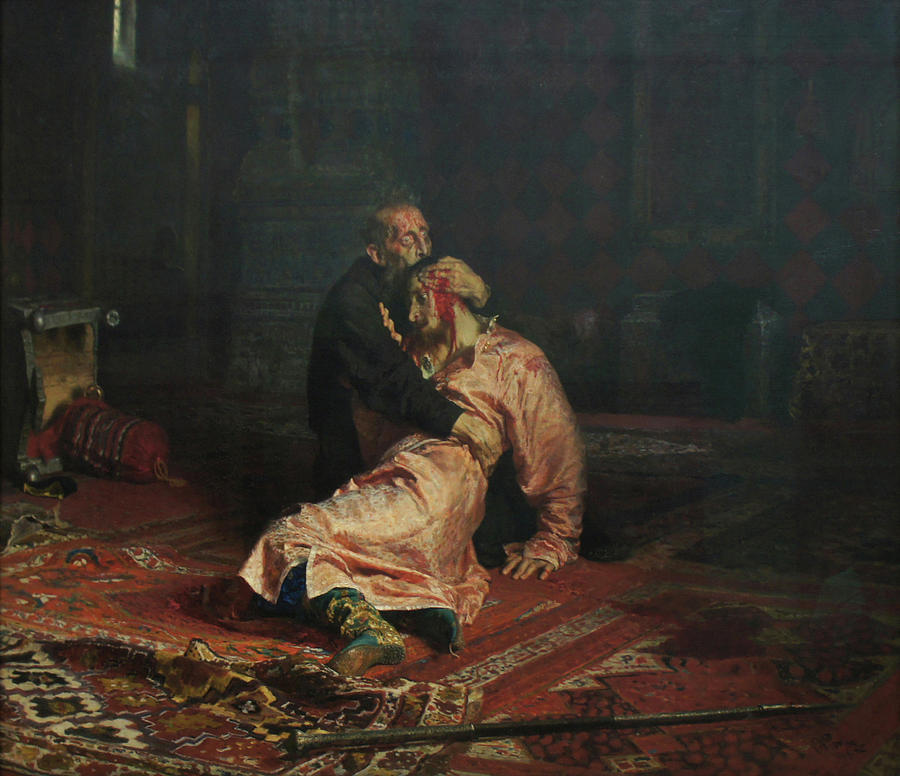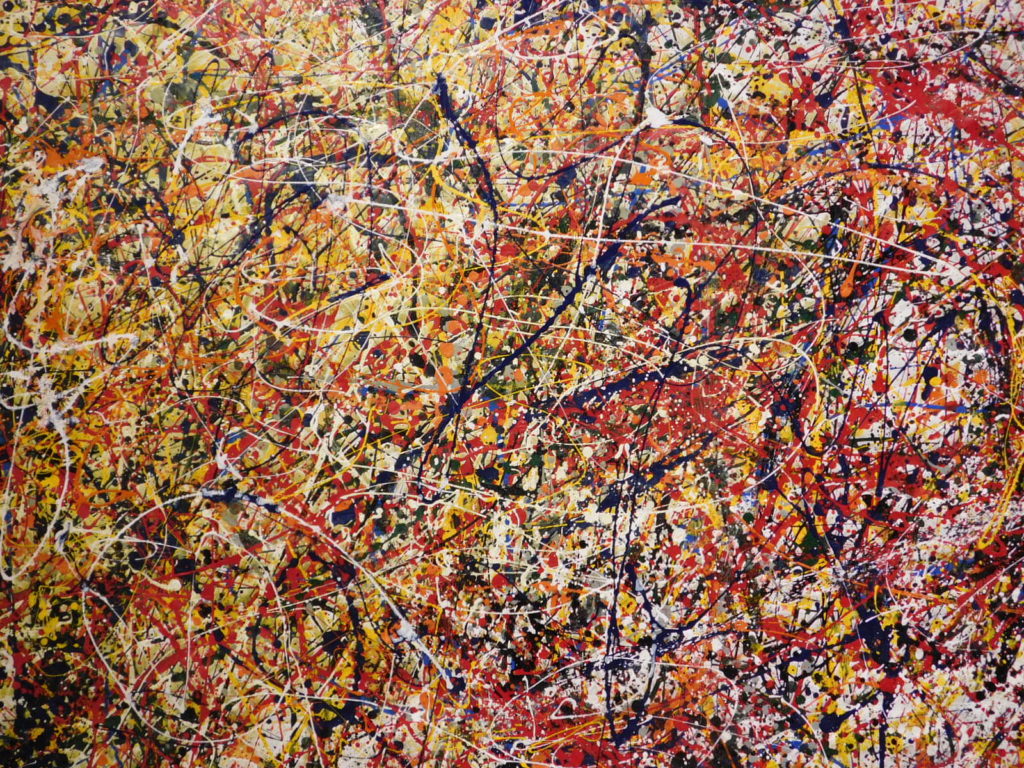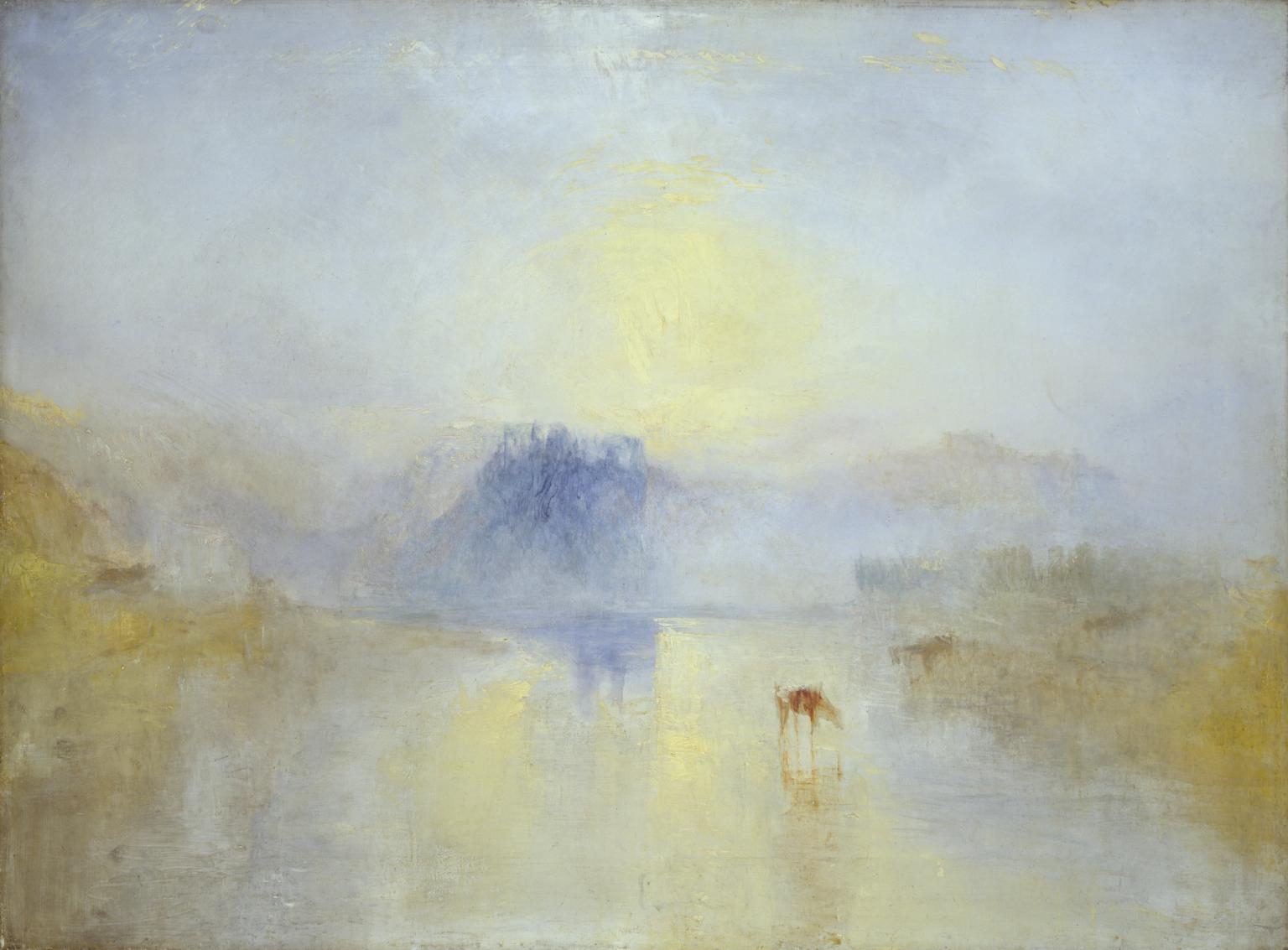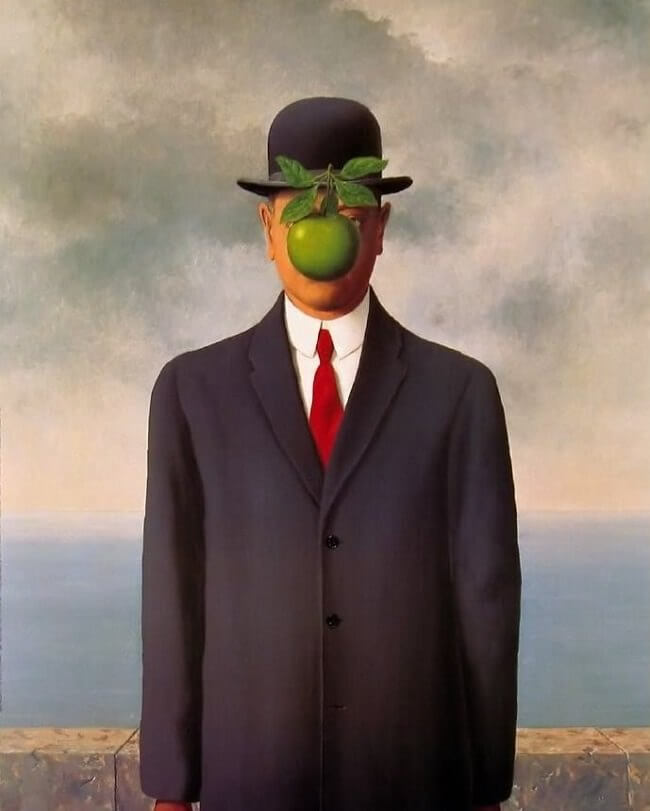
Currently viewing: Thoughts → What is Art?
What is Art?
For millennia, philosophy and the arts have been intertwined. It is hardly surprising that philosophers should wish to analyse something as pervasive and as universal as art—after all, many artists would insist that their works are a unique expression of a particular idea or concept, and is it not the job of philosophy to explore new ways of expressing ideas? Yet it is important to acknowledge that “a unique expression of a particular idea or concept” is just one of many possible definitions one could apply to the word “art.” Other proposed definitions for “art” include: the expression of emotion; a representation or imitation of something; or, as formalists would argue, a significant form created by human beings. In this essay, I will consider each of these proposals—in particular, the latter. I will argue that all of these suggestions fail to provide a satisfactory definition for art. After doing so, I will refer to the work of Ludwig Wittgenstein to arrive at the conclusion that we cannot, and need not, find a precise definition for art at all.
Let us first examine a couple of the proposed definitions of “art” I mentioned above in greater detail, starting with the definition of art as “the expression of emotion.” One can see why somebody might put this view forward. After all, art certainly does have the capacity to be deeply moving: Gregorio Allegri’s Miserere can provide some listeners with a serene tranquillity, while others might find that Ilya Repin’s exploration of grief in his painting Ivan the Terrible and His Son Ivan (pictured below) brings them some sort of satisfaction.

However, for a definition to function properly, it should be both necessary and sufficient. It is not necessary for art to express emotion. Architecture, for instance, is often classed as art, and it would be difficult to find anybody expressing the opinion that any given building is an expression of the architect’s emotion. Arguably, the same even goes for more traditional forms of art, such as the dispassionate, experimental music of contemporary composers like Philip Glass. Neither is expressing emotion sufficient for something to be classified as art, otherwise anybody could label their own everyday expressions of emotion as works of art.
We have seen, then, that the definition of art as “the expression of emotion” is unworkable. Let us move onto the next proposed definition of art: “a representation or imitation of something.” This, too, fails. As before, representing or imitating something is not a necessary condition of art. This is made clear by the existence of art that is visual yet too abstract to resemble anything one would see in their daily life, such as the works of Jackson Pollock (pictured below), as well as by the existence of art forms that are not even visual at all—namely, music, which is almost exclusively made up of sounds which are not intended to emulate the sounds we hear elsewhere in the world.

Representing or imitating an aspect of real life is not a sufficient condition to call something art, either, given that a diagram can represent statistics, and also given that most photographs taken are, more or less, perfect imitations of a particular view that exists in real life. We would not necessarily call a diagram or a photograph artistic, yet we would be forced to if we decided that art was defined by its ability to represent or imitate.
This brings us to the formalist argument: that art can be defined as a significant form created by human beings. The latter part of this definition is, of course, of vital importance. Were it not included, we would have to treat any form with significance and beauty as art, including, say, natural rock formations that are pleasing to the eye. This would be an absurd suggestion. Though philosophers attempting to find a definition for art may disagree on a number of issues, it would be difficult to find one that claimed that art need not have a human creator. It is, perhaps, the very existence of a human creator, endowed with reason and imagination, that in turn allows for the existence of a truly significant form. Suppose one’s friend is lovelorn, constantly whining about their broken heart. Now, if this friend were to simply whine in everyday speech, it would be nothing noteworthy, but if they were to take their feelings and put them into the form of a sonnet, for instance, or a painting, it would be art—or so the formalists argue. I am inclined to agree with the formalist argument here: a significant form does seem more necessary for a definition of art than either of the suggestions we have explored thus far. It is difficult, if not impossible, to imagine a work of art without particular formal qualities—for instance, the way certain colours or shapes complement one another in a painting, or a pleasing harmony in a work of music.
I believe, however, that the seminal formalist Clive Bell was mistaken in his declaration that “to appreciate a work of art we need bring with us nothing from life, no knowledge of its ideas and affairs, no familiarity with its emotions” (Bell 1931, p. 26). This may be the case for, say, instrumental music and abstract art, but it is most certainly not the case for many works of literature, in which the contents (rather than the form) take precedence. The formalist might object to this, though, pointing out that there can still be formal attraction to literature if it is presented in an aesthetically pleasing manner—one example might be an audiobook read by someone with a mellifluous voice—but this would expose a misunderstanding of my position. There can be formal attraction to a work of art, but that formal attraction need not be the only thing that matters when it comes to aesthetic evaluation. In addition, the so-called “significant form” is significant because of the way in which it relates to the contents of the artwork. Sometimes, an interesting relationship between form and content is part of the main attraction of a piece of art. To cite an example, Mark Haddon’s novel The Curious Incident of the Dog in the Night-Time uses prime numbers in lieu of conventional chapter numbers, which corresponds with the obsession the novel’s autistic protagonist has with prime numbers (Haddon 2003, p. 14). It is only the form of the novel that allows Haddon to include chapter numbers and then use them to immediately subvert the reader’s expectations.
It is not only literature that poses a threat to formalism. Even painting, to a certain extent, relies upon the viewer’s pre-existing knowledge of, as Clive Bell put it in the aforementioned quotation, the world’s “ideas and affairs.” Take, for instance, J. M. W. Turner’s work Norham Castle, Sunrise (pictured below), a painting dominated by hues of brown and grey, with far more emphasis placed on the atmosphere and the lighting than on physical details like outline.

Only the crenulations are visible on the castle itself (and even these are only hinted at with a few imprecise dabs of paint), so the viewer is required to have seen or at least heard of crenulations before, otherwise they will be thoroughly confused: if the title claims that the painting is of a castle, where is the castle? The tension between form and contents can also make a painting more aesthetically pleasing, and this is only possible with a basic level of knowledge that comes from somewhere other than within the painting itself. The reason the surrealist paintings of René Magritte are so acclaimed may very well stem from the sheer contrast between the bizarre juxtaposition of the painted subjects—for example, the painting The Son of Man (pictured below) features a smartly dressed man with an apple hovering directly in front of his face—and the realistic nature in which they are painted.

The classic expression of formalism, then, falls short of providing a satisfactory definition for “art” thanks to its failure to realise that a significant form alone is insufficient. Attempts have been made to salvage the theory. So-called “moderate formalism” proposes a view whose primary concern is with form and colour rather than subject matter, but it does not go so far as to say that subject matter does not matter at all. It is free of the biggest hindrance that the classic expression of formalism faces, and therefore I will admit that a reasonably good case can be made for its being treated as the definition of art. However, it is still too dismissive of the importance of subject matter for my liking, and I would argue that we should not concede to the formalists, not even the moderate formalists, when an option I see as preferable remains readily available.
This superior option is the one I briefly mentioned in the introduction, based upon Ludwig Wittgenstein’s concept of “family resemblance”. To illustrate this idea in his posthumous 1953 book Philosophical Investigations, Wittgenstein famously used the example of games, pointing out that the activities which we call “games” can be quite different to one another, running the gamut from international athletic events to games of poker with a few close friends, and everything in between. Wittgenstein asks the reader to “look and see whether there is anything common to all” (§66). The series of commonalities, he claims, can be thought of in the same way as the resemblance between different members of the same family. It is difficult to identify one particular trait that all the members of the family have in common—or, to put it another way, it is difficult to define what it means to be a member of that family. Similarly, it is difficult—if not impossible—to define art by some nebulous trait that unites every piece of art the human race has ever produced.
Instead, the distinction between something that is a work of art and something that is not a work of art is taught by examples. Wittgenstein clarifies this, once again referring to the example of games: “How would we explain to someone what a game is? I think that we’d describe games to him, and we might add to the description, ‘This and similar things are called “games”.’” (§69). There is no shame in the lack of a clear definition, in Wittgenstein’s view. If there is a particular reason for someone to come up with a definition of “art”, then so be it, but the concept of art is perfectly viable without the need for a definition. Wittgenstein draws a parallel with a “pace”, which is currently a nonspecific unit of measurement for distance: “Does it take [drawing a boundary] to make the concept usable? Not at all! Except perhaps for that special purpose. No more than it took the definition: 1 pace = 75 cm to make the measure of length ‘one pace’ usable.” (§69). To critics who would argue that pulling a definition out of thin air is impractical considering “pace” was not an exact unit of measurement beforehand, Wittgenstein essentially responds: yes, it was an inexact unit of measurement—but it was still a unit of measurement nonetheless. As a concept, it was not made less valuable or less usable in everyday life by virtue of the boundaries being somewhat ambiguous. This notion is repeated even more emphatically by Wittgenstein slightly later when he brings up another example, this time a photograph. A blurred photograph of a person is no less a photograph of a person. The blurring does not necessarily lessen the quality of the photograph; in some situations, a photograph that isn’t entirely sharp may be exactly what is needed (§71).
To conclude, I would argue that “art” is indeed a family-resemblance concept, and therefore indefinable. My position is bolstered by the work of Wittgenstein explored above; I agree with him that the indefinability of “art” is not necessarily a bad thing. In the words of Morris Weitz, art is an “‘open’ concept” and “choos[ing] to close the concept […] is ludicrous since it forecloses on the very conditions of creativity in the arts.” This is why, even if we accept that so-called moderate formalism is superior to the older form of formalism (which in turn was an improvement from proposed definitions of art as mimesis or emotional expression), it is preferable to treat art as a family-resemblance concept without a precise definition.
This essay was originally submitted in Spring 2020.
Back to top ↑Bibliography
Bell, Clive. 1931. Art. London: Chatto and Windus.
Haddon, Mark. 2003. The Curious Incident of the Dog in the Night-Time. London: David Fickling Books.
Margolis, Joseph. 1958. “Mr. Weitz and the Definition of Art”. Philosophical Studies 9 (5): 88–95.
Wittgenstein, Ludwig. 1953. Philosophical Investigations. Oxford: Blackwell Publishers.
Copyright © Seryndelle 2024–2025 under CC BY-SA.

